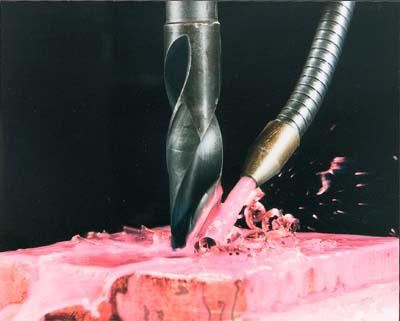
Cimperial 1072-HFP is a single fluid recommended for all metals and all heavy-duty machining operations including turning, drilling, tapping, reaming, gear cutting and broaching. The product was developed for use in high fluid pressure applications by CIMCOOL Fluid Technology, a leading global supplier of the most technologically advanced fluids available for use in many industrial operations.
CIMCOOL's HFP family of fluids, including Cimperial1072-HFP prevent, control and reduce foam even when fluids are used in high pressure delivery systems, including through-the-tool. In addition, Cimperial 1072-HFP reportedly provides excellent lubricity; extends fluid life with excellent biological control; is operator and machine friendly; and helps prevent in-process corrosion on parts and machine components. The combination of effective performance and low maintenance contributes to higher metalworking productivity.
Contact Details
Related Glossary Terms
- broaching
broaching
Operation in which a cutter progressively enlarges a slot or hole or shapes a workpiece exterior. Low teeth start the cut, intermediate teeth remove the majority of the material and high teeth finish the task. Broaching can be a one-step operation, as opposed to milling and slotting, which require repeated passes. Typically, however, broaching also involves multiple passes.
- metalworking
metalworking
Any manufacturing process in which metal is processed or machined such that the workpiece is given a new shape. Broadly defined, the term includes processes such as design and layout, heat-treating, material handling and inspection.
- tapping
tapping
Machining operation in which a tap, with teeth on its periphery, cuts internal threads in a predrilled hole having a smaller diameter than the tap diameter. Threads are formed by a combined rotary and axial-relative motion between tap and workpiece. See tap.
- turning
turning
Workpiece is held in a chuck, mounted on a face plate or secured between centers and rotated while a cutting tool, normally a single-point tool, is fed into it along its periphery or across its end or face. Takes the form of straight turning (cutting along the periphery of the workpiece); taper turning (creating a taper); step turning (turning different-size diameters on the same work); chamfering (beveling an edge or shoulder); facing (cutting on an end); turning threads (usually external but can be internal); roughing (high-volume metal removal); and finishing (final light cuts). Performed on lathes, turning centers, chucking machines, automatic screw machines and similar machines.

